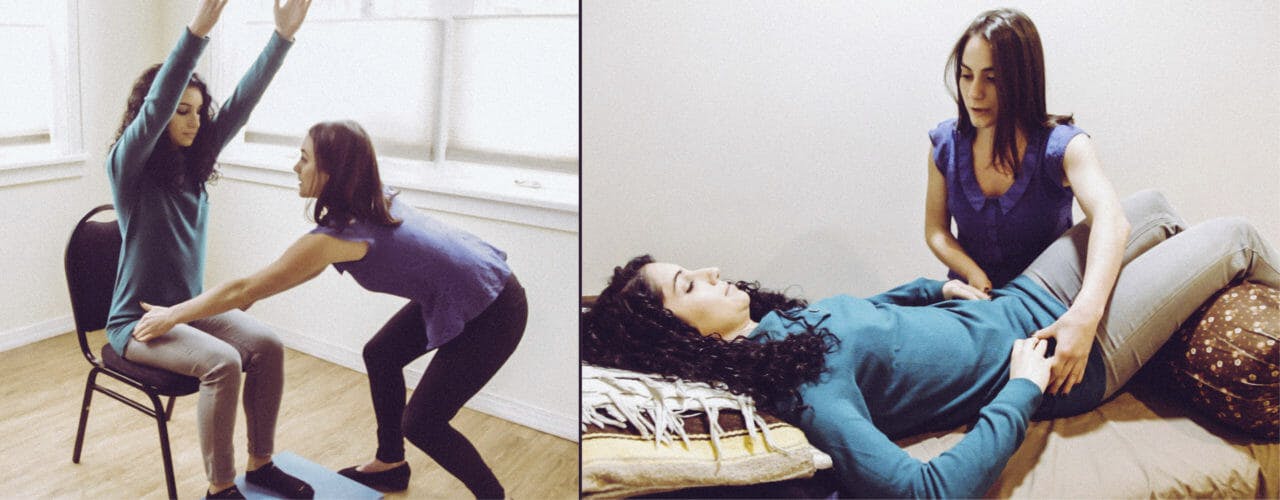As a pelvic floor physical therapist, almost every new mom I treat has concerns over diastasis rectus abdominis (DRA) or “diastasis recti.” This condition happens during and after pregnancy because of the stress placed on the rectus abdominus (the famous “six pack” muscle) as a fetus grows within the uterus. DRA typically develops in the second or third trimester, when the fetus is growing most rapidly. Certain factors, like older age and having multiple pregnancies, may make a woman more susceptible to developing DRA. Simply put, the connecting tissue between the two sides of the abdominal wall called the linea alba, stretches and separates. Some women heal on their own, but others may not.
While brushed off as commonplace (which it is!), DRA is not insignificant. Any woman experiencing changes within her body is justified in her concerns, whether they are physical or aesthetic. Concerns I often hear are, “Is this just something all women have to accept? Why did no one tell me this could happen?” And the most common one… “Will it ever go back to together?”
The good news is that women are smarter and more empowered than ever before, and many are now seeking help from a pelvic floor physical therapist. If you are affected by postpartum DRA, pelvic floor physical therapy can be a highly effective approach!
Why is it important to treat diastasis recti?
The abdominal muscles support your posture, help control movement, and protect the internal organs (i.e. bladder, uterus, and rectum). If you are affected by DRA, you may therefore be at an increased risk for injury. The symptoms associated with DRA combined with the the many stressors that come with having a new baby can negatively affect a woman’s quality of life.
What does diastasis recti or DRA feel like?
The separated abdominal muscles usually do not cause pain, but the sequela of DRA can lead to dysfunction within the body. Symptoms usually develop gradually over the course of a woman’s pregnancy, and may linger following labor and delivery. Symptoms associated with DRA include:
- Weakness within the midsection.
- A visible and palpable gap between the rectus abdominis muscle.
- Pelvic-floor muscle dysfunction.
- Urinary or bowel problems (incontinence, leakage, constipation, etc).
- Poor posture.
- Occasionally low back, pelvic, or hip pain.
What is a diastasis diagnosis?
A physical therapist will review your medical history and symptoms. This includes questions related to your pregnancy, labor, delivery, breastfeeding habits, and physical recovery. They will also assess orthopedic factors, including your posture, range of motion, and muscle strength. Lastly, they will do a gentle abdominal muscle examination to note the degree of separation.
What should I expect in terms of treatment?
If you do develop DRA, the earlier you see a physical therapist, the faster you will be on your road to improved function! Treatment strategies include:
- Education. Your PT will be your coach and your teacher. They will guide you through a safe and effective plan of care and teach you movements to avoid early on (i.e. not to perform traditional sit-ups or crunches).
- Bracing. Sometimes taping or bracing the abdominal region can provide external support for women with DRA. It can also work as a cue when relearning the correct position for your midsection.
- Postural Training. One of the most important components when treating DRA is improving postural control. This will involve activating core muscles such as your transverse abdominus (a deep abdominal muscle) and your pelvic floor without overusing the rectus abdominus muscle. In addition to strengthening, stretching plays a big role in postural control. While we often think all the muscles become weak during pregnancy, others may actually become overactive and tight. Your physical therapist will help you restore this balance. Lastly, they will help you transfer your gains to real life and review proper form when performing daily activities, such as lifting and carrying your baby.
In sum, DRA is a very prevalent condition that can be addressed with guidance from a skilled PT. If you have any questions related to diastasis recti or would like to get started on a PT program, I am happy to help!
Written By: Lacey Salberg

Contact:
Park Sports Physical Therapy
Dr. Lacey Salberg, PT, DPT
lacey@parksportspt.com
.png?auto=format&auto=compress&h=150)


